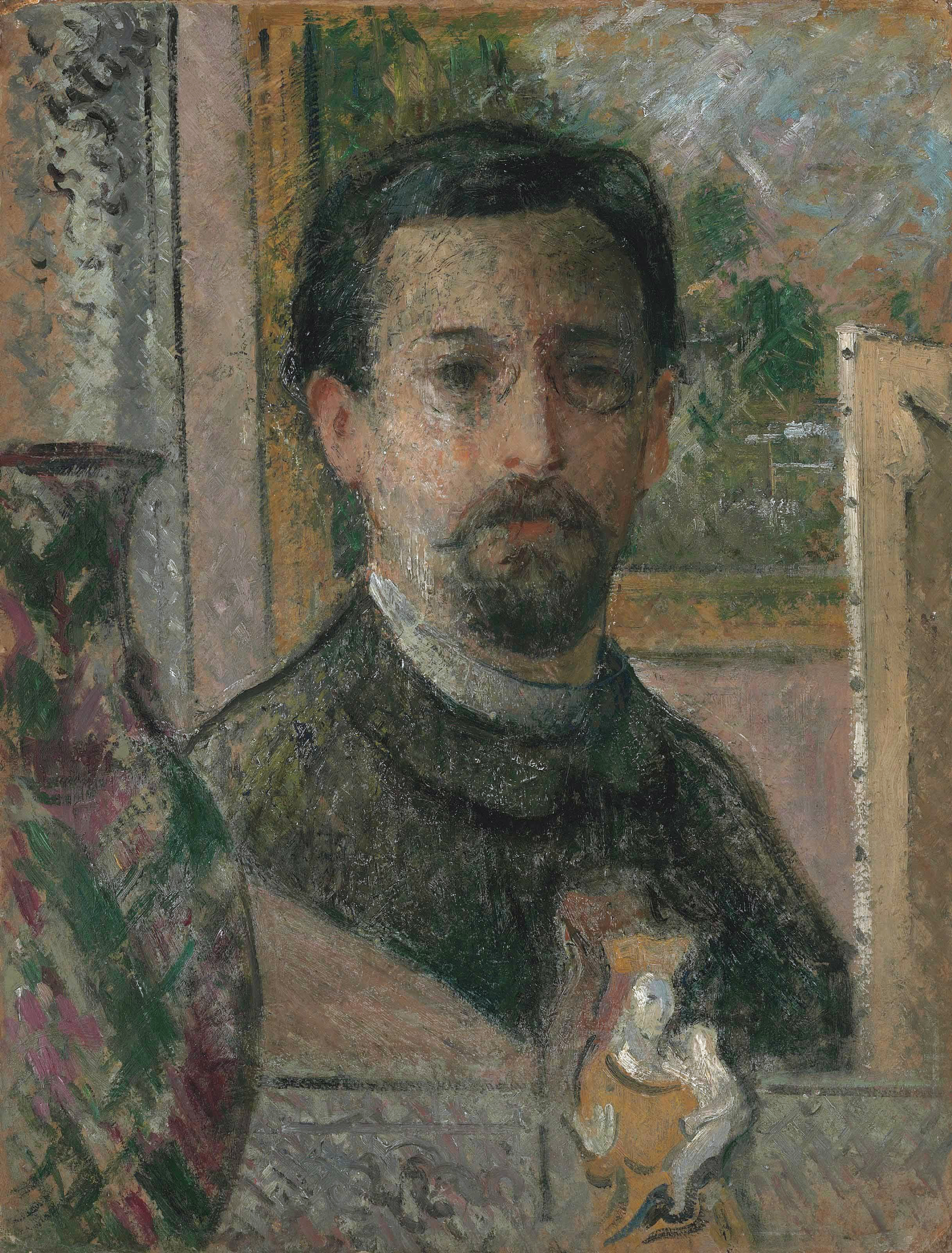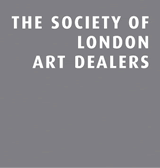Gustave Loiseau (1865 - 1935)
Paysage d'Automne à Nesle la Vallée
Request Viewing
Oil on canvas
65 x 81.2 cm (25 ⁵/₈ x 32 inches)
Signed lower left, G Loiseau
Executed in 1898
-
Provenance
Wally Findlay Galleries, Palm Beach
Private collection, USA, acquired from the above in April 1975 -
-
-
Description
This work is accompanied by a certificate of authenticity issued by Didier Imbert.
Painted in 1898 this oil landscape, shows Loiseau’s sophisticated approach to capturing rural landscapes. In both 1890 and 1896, Loiseau exhibited in the Impressionist exhibitions, with this piece proving indicative of the level of artistic maturity he had acquired towards the turn of the twentieth century.
The long, spindly trees, often a hallmark of Loiseau’s oils, become the main subject of the piece. Together with the small group of birds, the trees greet the immersive, soft-blue sky and exude a profound grandeur. The bottom right-hand side of the composition is dominated by haystacks, an iconic motif included in the work of many of the most renowned Impressionist artists. Claude Monet, known for his renderings of haystacks, chose this subject as a way of elevating the everyday, he wanted to show how painting could turn seemingly mundane objects into masterpieces. With Paysage d'Automne à Nesle la Vallée, we can imagine Loiseau also doing the same. He approaches the landscape with a delicacy, and he achieves what can be described as a humble beauty. While he lived in Paris for much of his life, the countryside served continually as a muse, and this sentiment is beautifully conjured by his oil paintings.
Today, Loiseau is recognised as one of the most significant French artists, with his work shaping our understanding of Impressionism and more broadly, the landscape genre. His work can be found in the Metropolitan Museum of Art in New York, the Museo Nacional Thyssen-Bornemisza in Madrid, and the Tokyo Fuji Art Museum, to name just a few international institutions.
This original painting by Gustave Loiseau is available for sale.
Artist's Biography
Gustave Loiseau was born 3 October 1865 in Paris. A Post-Impressionist painter, he is remembered above all for his landscapes and scenes of Paris streets.
Brought up in Paris and Pontoise by parents who owned a butchers shop, Loiseau served an apprenticeship with a decorator who was a friend of the family. In 1887, when an inheritance from his grandmother allowed him to concentrate on painting, he enrolled at the École des arts décoratifs where he studied life drawing. However, a year later he left the school after an argument with his teacher.
While working as a decorator, Loiseau redecorated the apartment of the landscape painter Fernand Quignon (1854-1941). After he left the École des arts décoratifs, Quignon tutored him in painting. In 1890, he went to Pont-Aven in Brittany for the first time, fraternizing with the artists there, especially Paul Gauguin and Émile Bernard. After experimenting with Pointillism, he adopted his own approach to Post-Impressionism, painting landscapes directly from nature. His technique, known as en treillis or cross-hatching, gave his works a special quality.
Loiseau first exhibited at the Salon des Indépendants in 1893 and at the Salon de la Société Nationale in 1895. He also exhibited at Impressionist exhibitions in 1890 and 1896.
Loiseau's paintings, revealing his passion for the seasons from the beginning of spring to the harvests later in the autumn, often depict the same orchard or garden scene as time goes by. Series of this kind, which also include cliffs, harbours or churches, are reminiscent of Claude Monet. Although Loiseau did not complete many portraits, he often painted people at work: dockers together with their boats, villagers leaving a Sunday service in Brittany or arriving at the market in Pont-Aven, or even carriages in Paris driving across the Place de la Bastille and the Étoile. He is also remembered for his paintings of Paris streets such as the Rue de Clignancourt or the Avenue de Fiedland. From the 1920s, he painted many still-lifes.
Loiseau died 10 October 1935 in Paris.

You may also like
-
 The Four Seasons - Winter
The Four Seasons - Winter
Lélia Pissarro, Figurative (b. 1963) -
Retour des Enfants de l'École des Enviros de Ztouzow Franciszek Tepa (1829 - 1889)
-
 Les petits lapins de Richard Hugues Pissarro dit Pomié (b. 1935)
Les petits lapins de Richard Hugues Pissarro dit Pomié (b. 1935) -
 L'Hiver blanc sur les gondoles, Venise (Italie) H. Claude Pissarro (b. 1935)
L'Hiver blanc sur les gondoles, Venise (Italie) H. Claude Pissarro (b. 1935) -
 Laure et Giulia à l'arrivée du train Lélia Pissarro, Figurative (b. 1963)
Laure et Giulia à l'arrivée du train Lélia Pissarro, Figurative (b. 1963) -
 Lyora et Joshua Sous la Neige en Israel Lélia Pissarro, Figurative (b. 1963)
Lyora et Joshua Sous la Neige en Israel Lélia Pissarro, Figurative (b. 1963)

 HR_1112024T16449.258.jpg?width=970&format=jpeg&qlt=40)
 FRAMED_1112024T164414.788.jpg?width=900&a.sharpen=4&format=jpeg&qlt=40)


